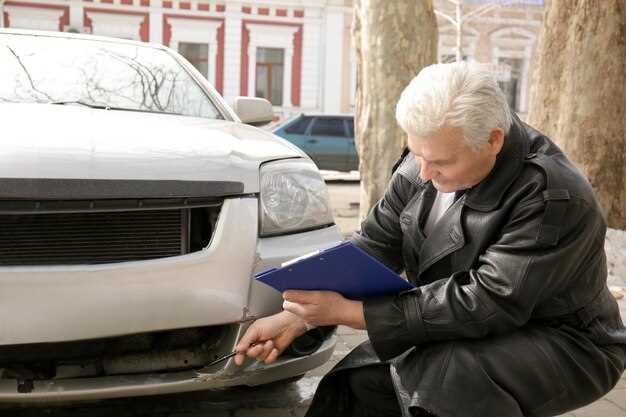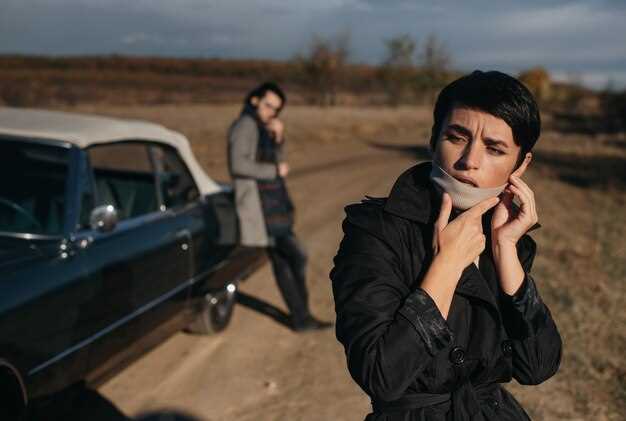
Classic car enthusiasts understand that owning a vintage vehicle comes with its unique set of delights and challenges. Among these challenges is the handling of accident claims, which can be particularly complex due to the specific valuation and intrinsic worth of classic automobiles. Understanding the insurance landscape tailored for classic cars is crucial for any owner, as it not only influences how claims are processed but also impacts the overall ownership experience.
In the unfortunate event of an accident, properly managing your claim is essential to ensure you receive the appropriate compensation. Classic car insurance policies often differ from standard auto insurance, with distinct coverages and requirements. Therefore, being well-informed about the claim process can significantly affect the outcome when navigating through the intricacies of insurance negotiations and documentation.
This practical guide aims to provide classic car owners with an in-depth understanding of how to effectively manage accident claims. By detailing essential steps and offering insights into common pitfalls, this guide will empower enthusiasts to protect their investments and expedite the claims process, ensuring their cherished vehicles can be restored to their former glory.
Handling Classic Car Accident Claims: A Practical Guide
When involved in an accident with a classic car, navigating the claims process can be uniquely challenging due to the vehicle’s value and rarity. Understanding how to handle these claims effectively is crucial to ensure that you receive fair compensation.
The first step in addressing a classic car accident claim is to gather all relevant information at the scene. This includes taking photographs of the damage, collecting contact information of witnesses, and obtaining police reports if applicable. Documenting the details can provide essential evidence during the claims process.
Next, notify your insurance company promptly. Provide them with all the facts, including the extent of the damage to your classic car. It is important to communicate that the vehicle holds not just monetary value but also sentimental worth, which may influence the assessment of the claim.
Classic cars often require specialized knowledge for accurate evaluations. Consider hiring an appraiser who specializes in classic vehicles to assess the damage. The appraiser can offer insights into the car’s market value, which helps support your claim and ensures you are compensated appropriately.
After filing the claim, stay in contact with your insurance adjuster. Be prepared to provide any additional information they may request. The adjuster will investigate the accident’s circumstances and determine fault, which can impact the outcome of your claim.
If the other party is at fault, you may also seek compensation from their insurance. In this case, gathering evidence that clearly establishes fault is vital. This may include witness statements and any available video footage. A strong case can facilitate negotiations with the at-fault party’s insurer.
In some situations, claim disputes can arise. If you find that your claim is undervalued or denied, you have options. You can negotiate directly with the insurance adjuster or consider seeking legal advice. Consulting with a lawyer experienced in classic car claims can offer guidance and support through the appeals process.
Handling classic car accident claims requires diligence and knowledge. By following these steps, you can navigate the complexities of the process with greater confidence, ensuring that your claim is handled fairly and efficiently.
Understanding Your Insurance Policy for Classic Cars
When it comes to classic cars, understanding your insurance policy is crucial for protecting your investment. Classic cars often differ from standard vehicles in terms of value, usage, and coverage needs. Here, we explore key aspects of insurance policies specifically tailored for classic automobiles.
First and foremost, familiarize yourself with the different types of coverage available for classic cars. Generally, standard auto insurance policies may not offer adequate protection for vehicles that have significantly appreciated in value. Instead, seek specialized classic car insurance that accommodates the unique requirements of vintage vehicles. These policies often include agreed value coverage, which ensures you receive a predetermined amount in case of total loss, avoiding depreciation concerns.
Additionally, it’s important to understand any mileage restrictions that may apply. Many classic car insurance policies impose limits on the number of miles you can drive annually. This is designed to minimize risk and encourage safe usage, as classic cars are often not used as primary vehicles. Be sure to clarify these limits with your insurer to avoid complications during an accident claim.
Another critical component is the stipulations surrounding modification coverage. If you’ve made custom enhancements to your classic car, confirm that your policy covers these modifications in the event of an accident. Failing to disclose modifications could lead to a reduced claim payout or denial if an accident occurs.
| Coverage Type | Description |
|---|---|
| Agreed Value Coverage | Ensures payout for the pre-determined value of the car in case of total loss. |
| Limited Mileage | Policies often limit annual miles driven, usually catering to enthusiasts. |
| Modification Coverage | Covers enhancements made to the vehicle, ensuring full compensation after an accident. |
| Comprehensive Coverage | Protects against non-collision-related damage, such as theft, fire, or vandalism. |
| Liability Coverage | Covers damages to third parties in case of an accident. |
In summary, thoroughly review your classic car insurance policy to ensure it meets your needs and provides adequate protection. Understand the specifics of coverage types, including limitations and applicable restrictions, to safeguard your classic automobile effectively. Always communicate with your insurance provider for clarification and ensure you are adequately covered in the event of an accident.
Steps to Take Immediately After a Classic Car Accident

Experiencing an accident with your classic car can be stressful and overwhelming. However, taking the right steps immediately after the incident is crucial for filing a successful insurance claim. Here is a concise guide on what to do right after the accident.
1. Ensure Safety: First and foremost, check for injuries to yourself and others involved. If necessary, call emergency services for medical assistance. Move to a safe location if the vehicle is obstructing traffic.
2. Document the Scene: Take detailed photos of the accident scene, including vehicle damage, road conditions, and any relevant traffic signs. This visual evidence will be invaluable when preparing your claims.
3. Exchange Information: Collect contact and insurance details from all parties involved, including witnesses. Make sure to note down names, phone numbers, insurance companies, and policy numbers.
4. Avoid Admitting Fault: In the aftermath of the collision, refrain from discussing fault or liability on the scene. Leave that determination to your insurance company and the authorities.
5. Notify Your Insurance Company: As soon as possible, report the incident to your insurance provider. Provide them with the necessary information and documentation you’ve gathered. This will initiate the claims process.
6. Keep Records: Maintain a detailed record of all communications with your insurance agent, including dates, names, and the content of discussions related to your claim.
7. Follow Up: Stay in touch with your insurance company to track the progress of your claim. Respond promptly to any requests for additional information or documentation.
By following these steps, you can streamline the process of handling your classic car accident claim and ensure that you receive the support you need during this challenging time.
Navigating Claims Process for Classic Car Damages

When involved in an accident with a classic car, it’s essential to understand the claims process to ensure you receive the compensation needed for repairs or restoration. The following steps outline the key components of navigating this process effectively.
-
Document the Accident: Immediately after the accident, gather all relevant information. This includes:
- Photographs of the damage to all vehicles involved
- Contact information for other parties
- Witness statements, if available
- Police report, if applicable
-
Notify Your Insurance Company: Report the accident to your insurer as soon as possible. Provide them with all the documented evidence you collected. This helps establish the timeline and specifics of the incident.
-
Understand Your Coverage: Review your insurance policy to understand what damages are covered. Classic car insurance often has specific clauses that differ from standard car insurance. Ensure you know your rights and the limits of your coverage.
-
Get a Damage Assessment: Seek estimates for repairs from qualified classic car restoration specialists. This is crucial as it can influence the settlement amount. Ensure that the assessors understand the specific needs of classic cars.
-
File Your Claim: Submit your claim officially with your insurance provider. Include all documentation, including photographs, damage estimates, and your police report. Keep copies of everything you submit.
-
Negotiate the Settlement: After the claim is filed, your insurance adjuster will review the damages and provide a settlement offer. Be prepared to negotiate. Use your collected evidence to advocate for a fair amount.
-
Seek Legal Advice if Necessary: If negotiations stall or if you feel the settlement is inadequate, consider consulting with an attorney specializing in classic car claims. They can help advocate for your interests and ensure a fair resolution.
By following these outlined steps, you can effectively navigate the claims process for classic car damages, minimizing stress and maximizing compensation.




